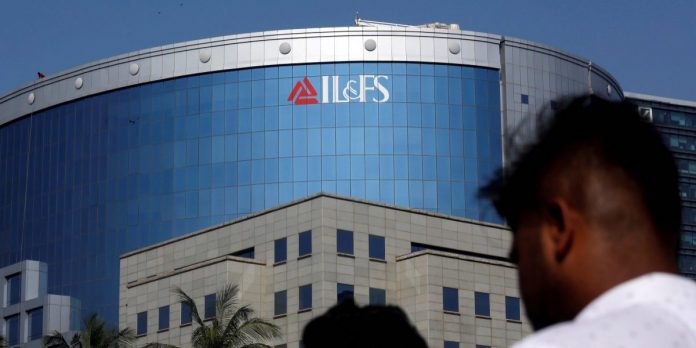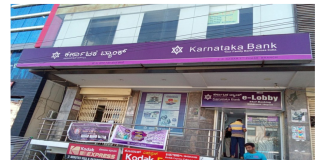The quality and intellectual calibre of the former directors of insolvent IL&FS was revealed to all when an anonymous former director and ex-member of its risk management committee of the board went on record with a Business Standard journalist to justify the incompetence of the board. Such conduct may not be the exception but the norm in many listed banks and non-bank finance companies, as these directors align themselves with the management and ignore non-promoter interests. It seems that institutional investors, foreign and domestic, prefer not to rock the boat when these directors protect and reward only the interests of the management. They leave it to the regulator to protect their interest and the public’s interest. And if the regulator wakes up late in the day, it may be too late to protect either.
The Risk Management Committee (RMC) is an extremely important sub-committee of the board in a bank or a non-bank finance company (NBFC), as in such entities risk is integral in a leveraged lending business dealing with credit, liquidity, reputational, market risks, capital adequacy and compliance with regulatory norms. In IL&FS it was all the more important, as it was an infrastructure developer and financer and hence would not only have an inherent asset-liability mis-match but numerous other risks.
Since FY2015, and until the Indian government removed the executive and independent directors, the Risk Management Committee (RMC) of the board consisted of R.C. Bhargava (former bureaucrat and non-executive chairman, Maruti), Michael Pinto (former bureaucrat), Arun Saha (then joint CEO and managing director, IL&FS) and S. Bandyopadhyay, Life Insurance Corporation (LIC) nominee and then managing director, LIC Pension Fund, who resigned from the board on April 3, 2017, and was replaced by Hemant Bhargava, managing director, LIC.
This writer had highlighted in an article on September 17, 2018 how the all-important RMC of the IL&FS board met only once since the year ended March 31, 2015, on July 22, 2015. In 3 of the last 4 years, when the company’s fundamentals were rapidly deteriorating and its insolvency was rising, the RMC did not conduct a single meeting. By contrast, during the same period, the RMC of IDFC, another infrastructure lender, met 14 times.
IL&FS’s conduct was all the more bizarre as it was designated by the regulator as a “Systemically Important Non-Deposit Taking Core Investment Company,” and had on its board directors representing the interests of prominent banks (State Bank of India and Central Bank of India), NBFCs (HDFC till September 14, 2017) and marquee global names such as ORIX Corporation, Japan and the Abu Dhabi Investment Authority, all of whom should comprehend risk management.
In the Business Standard article dated October 6, 2018, an anonymous former director (one of the five mentioned earlier) of the RMC said,
“all the issues relating to the risks faced by the company and its impending financial problems were the key agenda whenever the full board met during the last two years.”
“What is the point of having a meeting of the risk management committee which only had four members, when all issues in the purview of this committee were being discussed in the 15-member board meeting where all the directors were present,[direct quote of former director]”
That an experienced director can go on record and release such an absurd statement to defend the board’s conduct is a telling testimony of the quality of such directors, who were regarded as celebrities in the corporate world. The whole purpose of having sub-committees of the board is to have its members intensively examine issues, provide likely solutions and recommend these to the board for consideration. Normal board meeting do not have the time to critically examine issues from various angles, and hence such issues require separate and specialised attention; dedicated sub-committees of the board are set up for the purpose. Going by this former director’s argument, all sub-committees of the board are superfluous, including the Audit Committee, if the regular full board meetings make the issue a part of its key agenda.
The media article goes on to further state,
“The former director points out that the key risk for the company was that it could not take up any more loans and had to raise further capital. Otherwise, it would have problems paying back interest payments.”
In effect, the individual is stating, that the company was borrowing to pay interest and that when it was unable to do so; it required to raise equity not to reduce the debt of the company but to meet its interest payments. Now, which prospective equity investor will part with funds for such an absurd, unviable proposition? Interestingly, that the consolidated accounts was showing that the company was insolvent (factoring intangibles) since atleast FY2014 (ignored by credit rating agencies) was not considered a key risk by the board.
It defies belief that such an individual not only qualified for a board seat at such a large and complex institution like IL&FS, but was a member of its all-important RMC. The conduct of this particular director is sadly a reflection on many directors who grace the boards of corporate India where scams and mis-management have been unearthed. Even when their incompetence and complicity has been totally exposed, not only are these directors not apologetic, but masking their identity, they release ludicrous statements, justifying their misdeeds.
This writer has documented on numerous occasions the mis-management in the financial sector: fudged accounts detected by the regulator, huge remuneration to senior management not linked to overall performance (here and here), brazen conflict of interest, and poor performance. In all these instances, the board of directors, especially the independent directors, not only failed to discipline and hold the CEOs accountable, but rewarded them in most cases with fresh terms, increments and gave them a clean sheet. It seems that institutional investors, foreign and domestic, prefer not to rock the boat when these directors protect and reward only the interests of the management. They leave it to the regulator to protect their interest and the public’s interest. And if the regulator wakes up late in the day, it may be too late to protect either.














